Since the introduction of the Contax Distagon 2.8/21 in the early 1990’s, the 21mm lenses from Zeiss have a long and glorious history of being some of the best wide angle lenses in the world. While the Loxia 2.0/35 and the Loxia 2.0/50 are refined ZM-Designs, the Zeiss Loxia 2.8/21 is the first Loxia lens that features a new optical design. Lets have a look if the Loxia 2.8/21 can keep the heritage alive.
31/05/17 Update by Bastian: I have been using this lens regularly for a year now and Jannik asked me if there is anything I would like to contribute to his review, so I added a few notes and sample images.
Sample Images
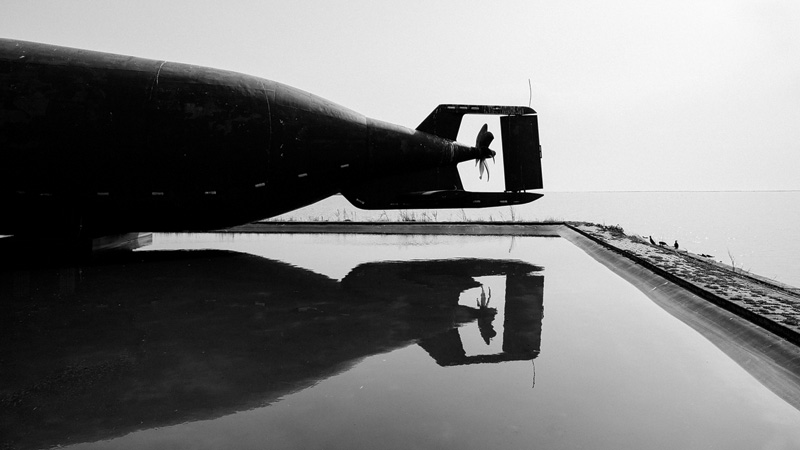
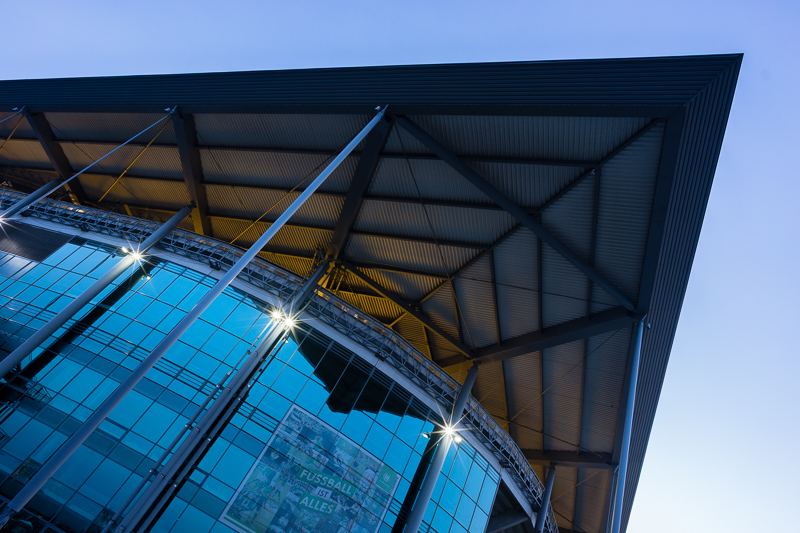
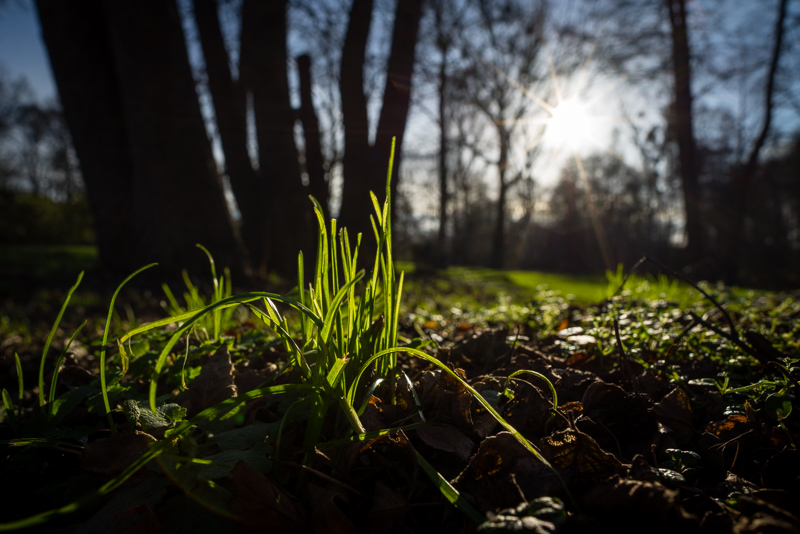
Specifications
- Diameter: 62 mm
- Length: 72/85 mm (without/with caps and hood)
- Filter Diameter: 52 mm
- Weight: 394 g
- Number of Aperture Blades: 10 (straight)
- Minimum focus distance: 25 cm
- Max. Magnification: 1:7.81
- Elements/Groups: 11/9
- Mount: Sony E
More details can be found in Zeiss’ official data sheet.
The Zeiss Loxia 2.8/21 sells for $1.499 at Amazon.com and Amazon.de. You can also buy this lens at B&H Photo (affilate links).
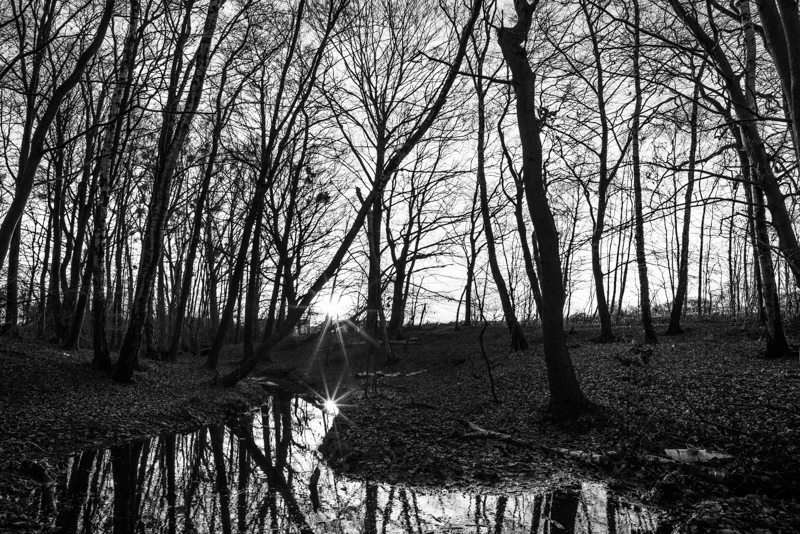
Build Quality
As good as it gets and similar to the Zeiss Loxia Planar 2/50mm. Except of the lens caps, everything is made from metal and glass. The physical appearance of this lens is very close to the other Loxia lenses as the housing shares the same diameter. Only difference is that the 2.8/21 is a bit longer.
The scratch resistance of the paint has still to be proven. I hope it performs better in this regard than the Sony/Zeiss E-Mount lenses, which collect scratches easily.
Although there is no further information about weather sealing, the lens has a rubber gasket around the lens mount. Therefore, I would still be careful bad weather conditions. While there is still no Sony camera with advanced weather sealing, this is no problem to me.
Different to the Loxia 2/35 and the 2/50, the lens hood has a tulip shape. Even the markings and the Zeiss badge of the lens hood are engraved. The inside of the hood is lined with black felt to prevent reflected light. The bayonet mount doesn’t hold the lens hood very tight.
Handling
As with every Zeiss lens family, the lenses of the Loxia line are designed to have many aspects in common.
The focus and aperture rings have to be operated manually. All lenses of this line use an electronic connection to communicate EXIF-data and to activate the focus magnification while turning the focus ring .
The position of the aperture ring and the focusing ring is exactely like the Loxia 2/50 which I like. Some claim, that the aperture ring isn’t different enough from the focus ring. In my own use, I dont’t have a problem with that. Just move the fingers backwards until they hit the front plate of the camera. Then turn the ring, it can only be the aperture ring. The aperture ring is declickable for video use and has 1/3 stops. This is a bit annoying to photographers, because the rotation of the ring takes too much time if you want to move from f/2.8 to f/11.
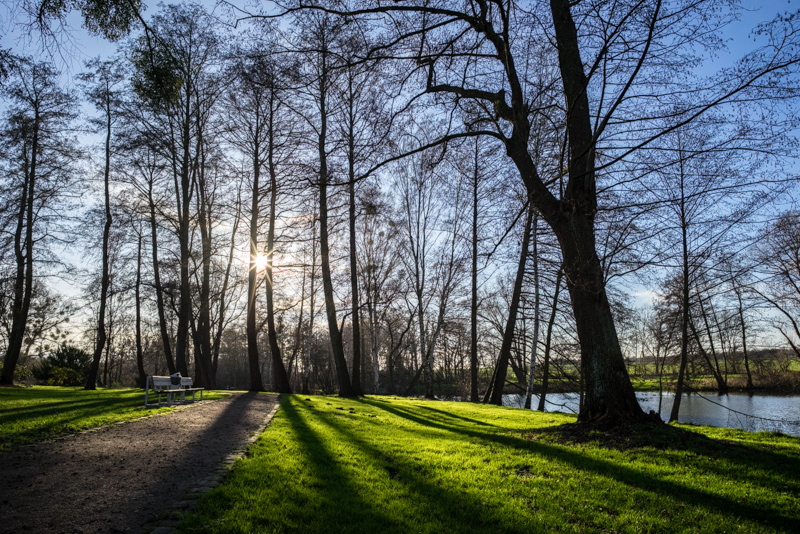
The focus ring turns 90°. The focus throw from from 2m until infinity is around 7mm which is a bit too short. Critical focusing can be a little tricky with this lens. It can focus slightly past infinity.
There are almost no non moving parts to grab to mount or unmount the lens, if this is something that may bother you have a look at the Loxia Lens-Grip from PocketPano.
I really like, that Zeiss could manage to use the 52mm filter thread of the other Loxia lenses.
One thing, that I find amazing, is that even the resistance and dampening of the focus and the aperture ring is the same with the Loxia 2/50 and the Loxia 2.8/21.
Focus Shift
The Zeiss Loxia 2/50 and the 2/35 show a focus shift. This can be annoying, therefore I was curious if the Loxia 2.8/21 shows the same behavior:
This is a 100%-Crop from the center. I didnt move the focus ring between the two pictures. Gladfully, there is no focus shift with the Loxia 2.8/21mm. I did this test at close distance too and got the same result:
Distortion
The Loxia 2.8/21 shows some slight barrel Distortion with a strong mustache-style sub-frequency. This is not easy to correct without a profile.
Vignetting
The original examination was, that Vignetting gets slightly better until f/5.6 but worse at f/8. This is physically not logical but I repeated this test a few times and confirmed that result.
Therefore, I did a new test with the Loxia 2.8/21. First, I did an aperture series with the lens mounted correctly, so that it had electronic contact to the camera and submitted the aperture value and everything else(left side). Then, I slightly turned the lens until it didn’t have any contact to the camera. The results are displayed at the right side.
It is very interisting to see, that vignetting is already corrected in the RAW files until f/4. In reality (right side), vignetting at f/2.8 is much worse and is only marginally corrected in RAW from f/5.6 on.
The real vignetting at f/2.8 is around 2.5 EV.
Chromatic Aberrations
Although it is no APO-lens, chromatic aberrations are on a very low level. I didn’t notice any significant longitudinal chromatic aberrations. Lateral chromatic aberrations are on a very low level too. The highest level of lateral chromatic aberrations that I noticed can be seen in the following image: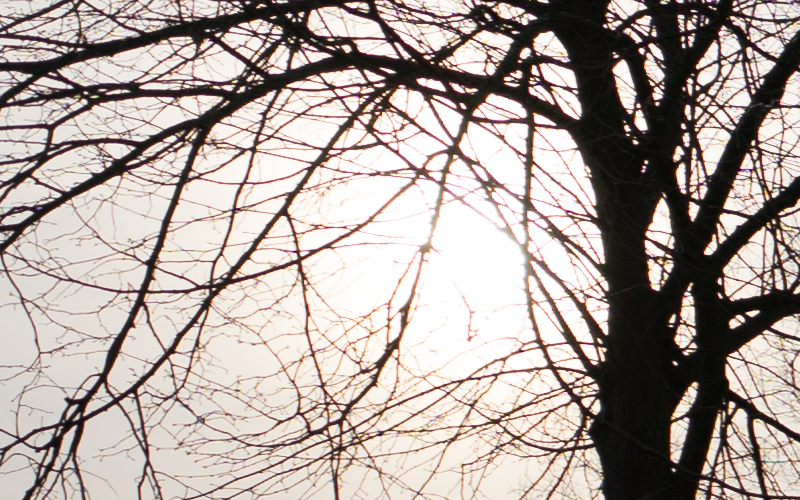
Flare & Glare
I didn’t find any glare with the Zeiss Loxia 2.8/21, the T*-Coatings do a great job here.
The lens can produce two different types of flare:
The first one can appear at the edges of the image when the lens hood is not used. I recommend to use it in critical situations.
The second type consists of a few small segments and a pitch circle.
Example I:
Example II
Here you can see the pitch circle, it is not very pronounced:
Here are the small artifacts:
These samples show the worst situation I could archieve with the Zeiss Loxia 2.8/21. I pointed the camera straight into the sun and moved until I found the flares. In most situations, flares are not an issue with this lens.
Comment from Phillip: The Loxia 2.8/21 shows a remarkable flare resistance, I don’t know another lens which comes close here. The Sony FE 4/16-35 is clearly inferior in this aspect as is the Milvus 2.8/21 I could try a couple of weeks ago.
Comment from Bastian: I like to have the sun inside the frame as part of the composition and the Loxia 21mm 2.8 has proven to be an exceptional performer in this regard, rarely showing any ghosts at all, even under very demanding conditions:
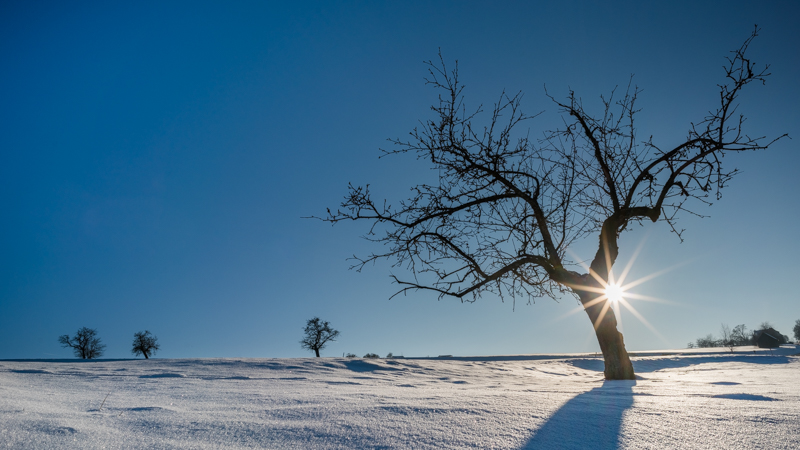
Bokeh
Bokeh is not a major concern with SWA lenses because you rarely have shallow depth of field. You have to get very close to the subject to get some blur without stopping down but even then the Zeiss Loxia 2.8/21 performs surprisingly well for a SWA lens.
For the test I chose a critical subject close to the minimal focusing distance.
f/2.8: The background blur looks surprisingly decent. The bokeh balls are nearly round although you can see the shape of the aperture very slightly. The reason for this is that the aperture is already slightly closed at the f/2.8 setting. The borders of the bokeh balls can show some bokeh fringing, but that is not really strong. The foreground bokeh can be a little nervous wide open. You can see this on the brigh brown vertical branch in front of the focus plane.
f/5.6: At this aperture, the shape of the aperture is clearly visible, resulting in 10-edged bokeh balls. The foreground bokeh is a bit smoother.
Comment from Bastian: Highly corrected modern wide angle lenses, especially those using aspherical elements, often struggle when it comes to bokeh rendering, showing harsh transitions, structures in the light discs and severe outlining. But I think the Loxia’s bokeh isn’t too bad actually, light discs are pretty evenly lit and show even less outlining compared to the Zeiss Batis 18mm 2.8. There is one thing to be aware of though: the aperture blades are slightly closed already at f/2.8. On the one hand this is the reason you will already see sunstars around point light sources wide open (which I like) but on the other hand light discs are not perfectly round even at f/2.8:
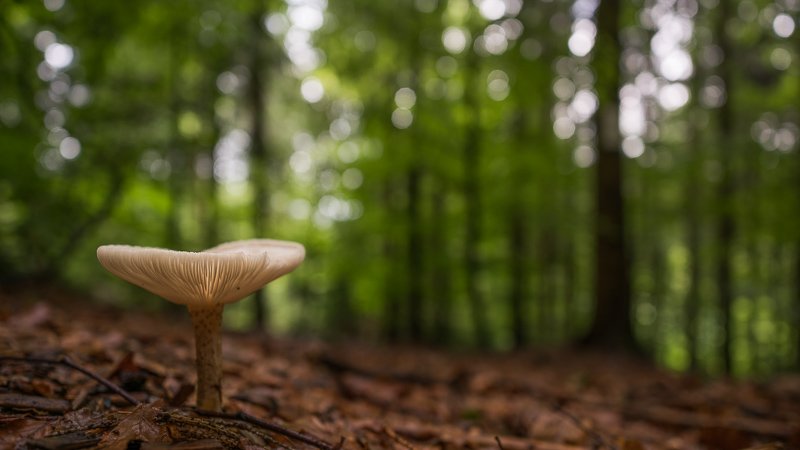
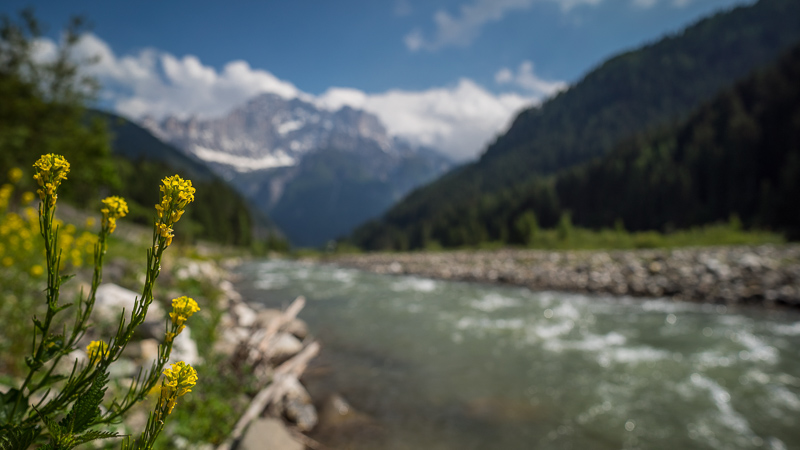
Sun Stars
The Zeiss Loxia 2.8/21 shows sun stars already wide open. A close look inside the lens shows, that the aperture seems to be slightly closed at f/2.8. I dont’t know the reason for that, maybe the lens could be brighter than it is. The sun stars with 10 rays are absolutely beautiful, I really like them.
Comment from Bastian: So do I 🙂 You can find more sample images with sunstars in my flickr album for this lens.
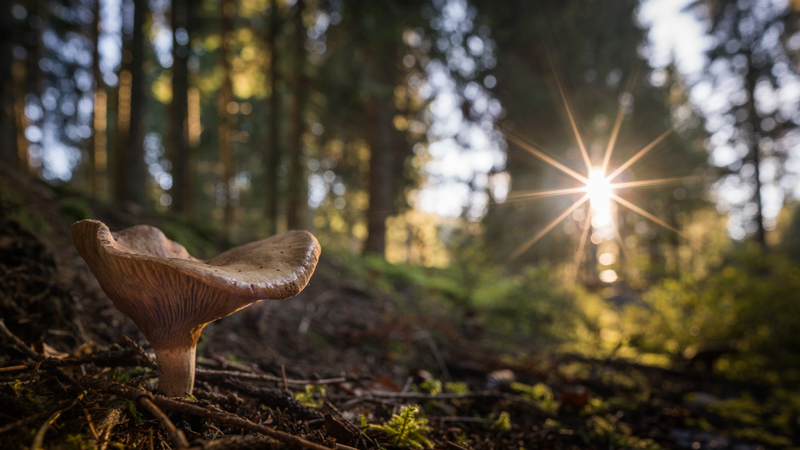
Sharpness
Infinity
The lens is sharp across the frame wide open. The center of the Zeiss Loxia 2.8/21 shows peak sharpness at f/2.8. The midframe peaks at f/4 and the corners slightly increase until f/5.6 although the differences need to be searched with a magnifying glass. Diffraction becomes visible at f/8 and obvious at f/11.
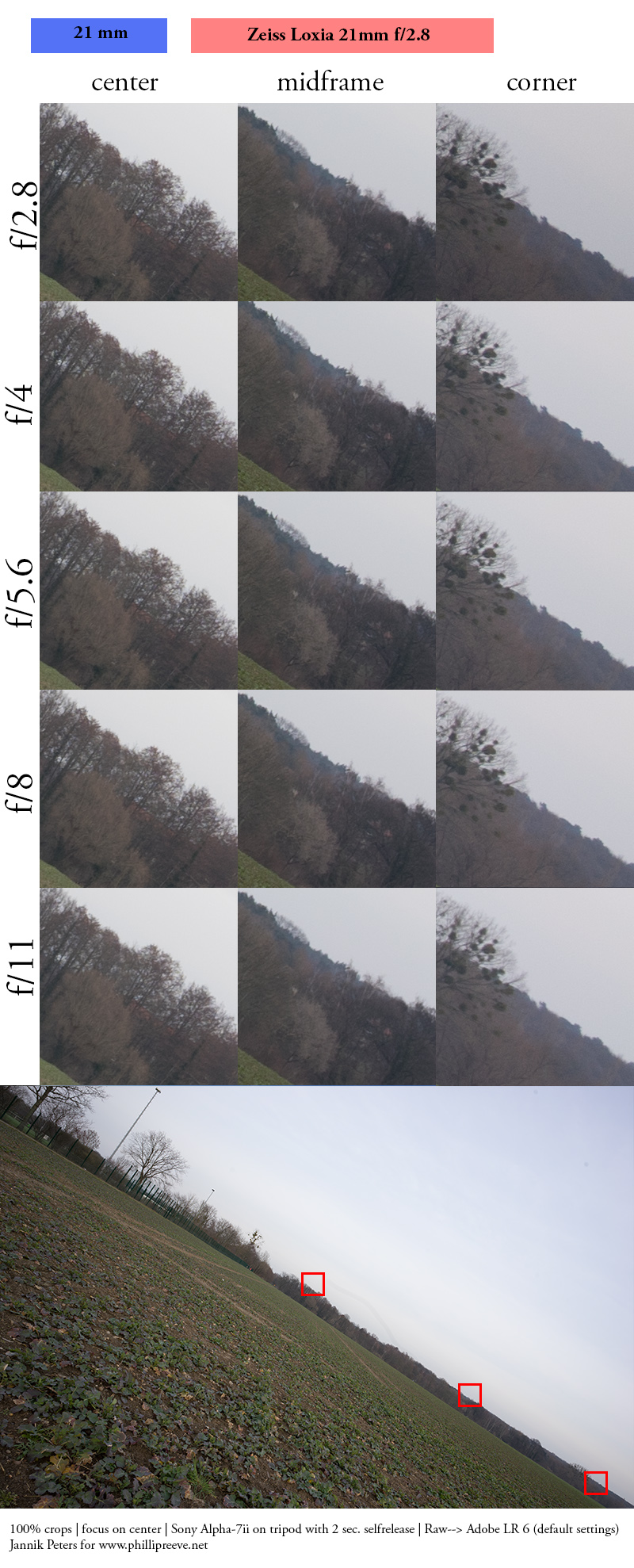
Comment from Bastian: On the 42mp A7rII the Loxia 21mm 2.8 is still an exceptional performer regarding resolution, contrast and clarity.
Close-Up
The Loxia 2.8/21 does not feature floating elements. I expected the lens to be somewhat soft near the minimum focus distance. Surprisingly, the difference between f/2.8 and f/5.6 is not that high. The Loxia 2.8/21 performs excellent at every distance.
Update by David
Actually although it’s not mentioned in the specifications in words, the Zeiss catalogue shows this lens and the 25 both having floating elements. I checked with the distributors and they confirmed this. That explains the excellent close performance!
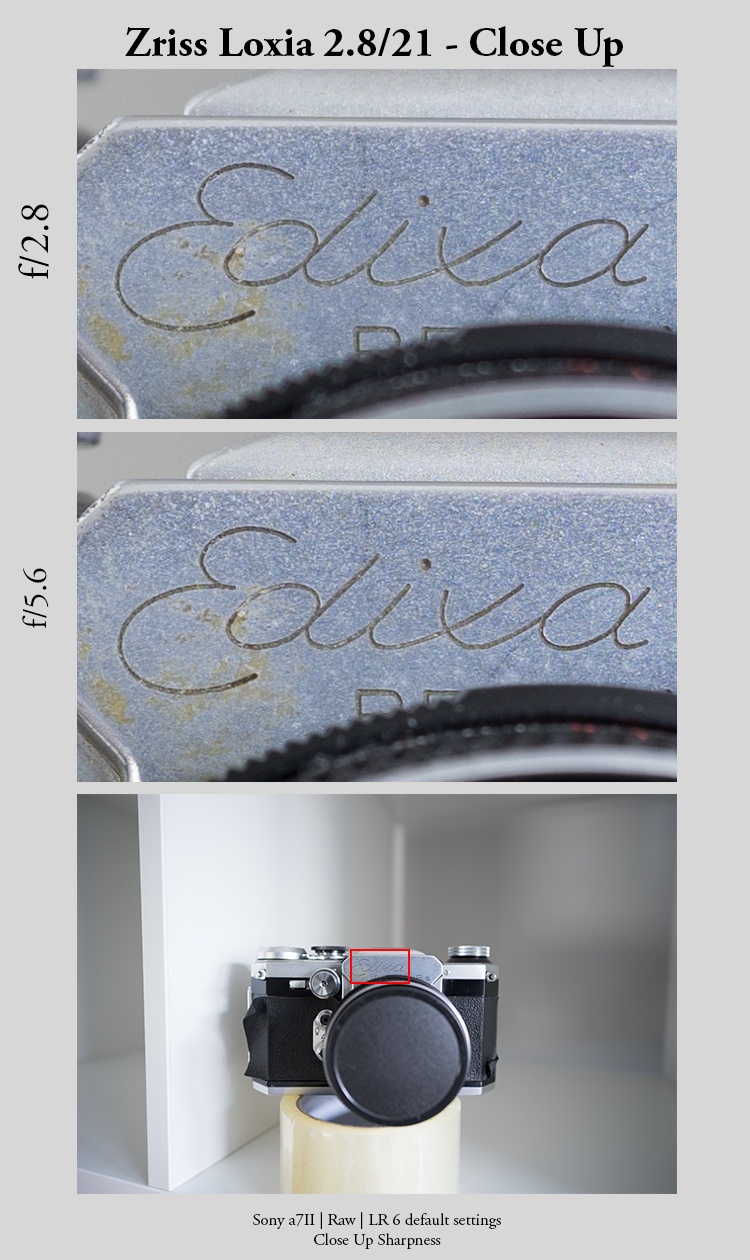
Coma
The Loxia 2.8/21 shows some visible coma and astigmatism wide open in the corners. It is reduced at f/4 and mostly gone at f/5.6. If the corners are not perfectly in focus, stars can become stripes due to astigmatism. Coma is significantly less visible with darker light sources.
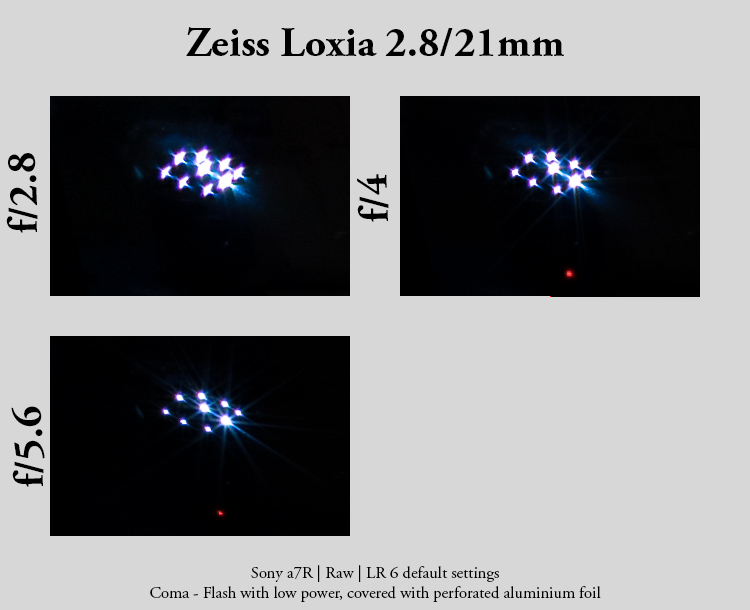
Most of the image is completely coma-free, just the outer region is affected. The picture below shows the charasteric of coma in the top right of an image.

Use for Astrophotography

Comment from Bastian: Meanwhile I got the chance to use this lens for astrophotography under very good conditions and it is a great performer. Stars are less demanding than city lights and it is very hard finding deteoriated stars at all wide open, so I wouldn’t hesitate using it at this aperture. See this 100% crop from the extreme corner for reference:

The only bummer is the high vignetting wide open, but the competition (e.g. the Zeiss Batis 18mm 2.8) isn’t exactly better here.
Zeiss Loxia and Fotodiox Tough E-Mount
I have started this review using a Sony A7R with Tough E-Mount LT Signature Edition to prevent any influences caused by the original bayonet.
Unfortunately, the flange distance of my Tough E-Mount LT is slightly higher than with my original plastic/metal bayonet. Focusing on infinity is not possible with my Tough E-Mount LT!
One more problem with the Tough E-Mount LT is the rubber gasket. It slightly overlaps the original bayonet so that it doesn’t hit the metal ring. The Tough E-Mount LT was constructed wider than the original bayonet to prevent light leak. When mounting a Loxia lens, you have to press the lens pretty hard, so that the rubber gasket is squeezed to the sides. Although I can not imagine, that it is bad for the lens itself, this could possibly damage the rubber gasket in long term use.
While the Tough E-Mount LT works great with my native lenses, you should be aware that the use of the Loxia 21mm f/2.8 with it could not work in your case too.
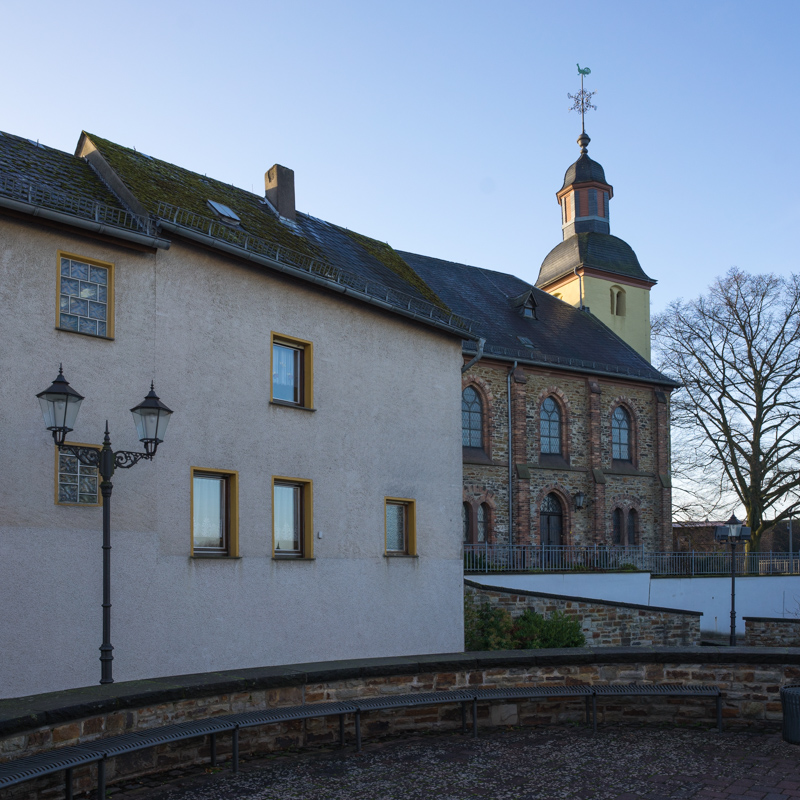
Conclusion
good
|
average
|
not good
|
First of all, this lens is very sharp from f/2.8 on. This is a great archievement, especially if you take the small size into account. Even more remarkable is, that this lens is sharp from close-up until infinity without using floating elements.
Vignetting and Distortion are visible, but not extreme and easily fixable with a lens profile. The lens performs very well against bright light and has no problems with veiling flare. Ghostings are small and often unobstrusive if there are any of them. Just take care if the sun is placed in the golden ratio where the lens shows the strongest ghosting.
In terms of character, the Loxia 2.8/21 really rocks. This lens shows awesome high contrast even wide open and renders colors beautifully. The clarity of the images is very high. The bokeh is very nice for a 21mm lens, especially in the center. The sun stars are amazing. They contribute in a great way to the character of the lens.
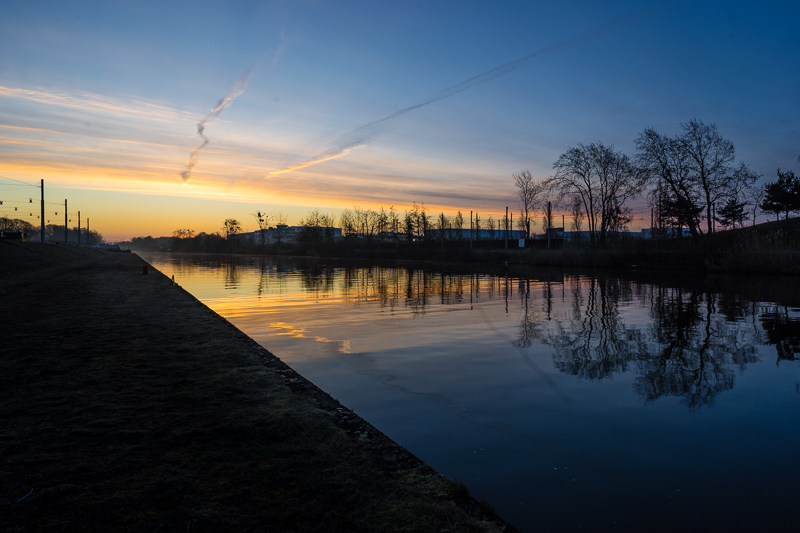
The build quality and the handling are top-notch although the exact focusing can be a little tricky. The possibility to take 52mm filters and the small size are outstanding. The high price tag reflects itself in terms of build quality, although I miss a lens bag in the box.
I think that the Loxia 21mm f/2.8 is one of the best wide angle full-frame lenses of the world. If you are looking for a very high performance, fast and very compact wide angle prime, the Loxia 2.8/21 is one of the best choices for your Sony FE-Mount Camera.
Comment from Bastian: I tend to agree and think this lens might be the best one for actually taking photos that Zeiss has ever built. Whilst I welcome the optical performance of the Otus lenses what I really want to use are well balanced lenses with exceptional performance in a small package. The Loxia 21mm 2.8 is exactly this, and the Loxia 85mm 2.4, that has been released in the meantime, offers a very similar performance at a different focal length. I hope further Loxia lenses will continue this trend.
If you found this review helpful, consider to buy the lens using one of these affiliate links. It doesn’t cost you anything and keeps this site running and independent:
The Zeiss Loxia 2.8/21 sells for $1.499 at Amazon.com and Amazon.de. You can also buy this lens at B&H Photo (affilate links).
Sample Images
The full size sample images are only edited in terms of contrast. No sharpening or noise reduction added.
Comment from Bastian: You can see some more sample images in my flickr album for this lens.
Full Size samples added on 01.03.2016 with the proper lens:
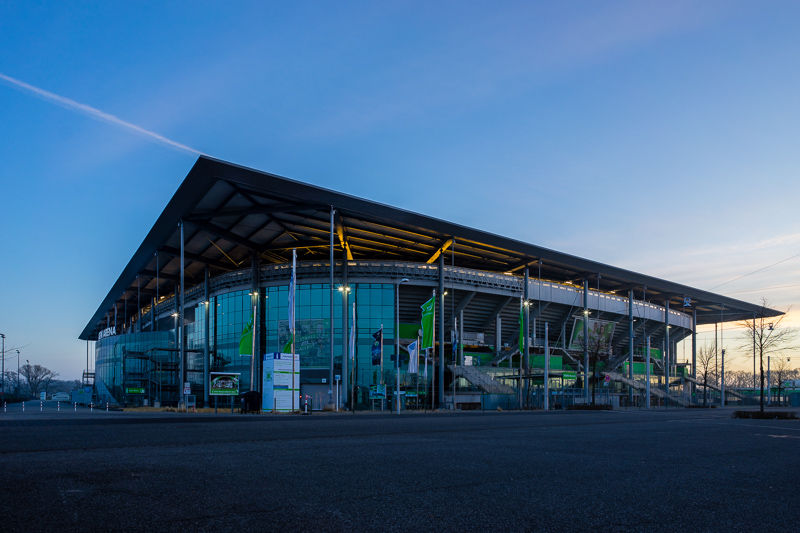
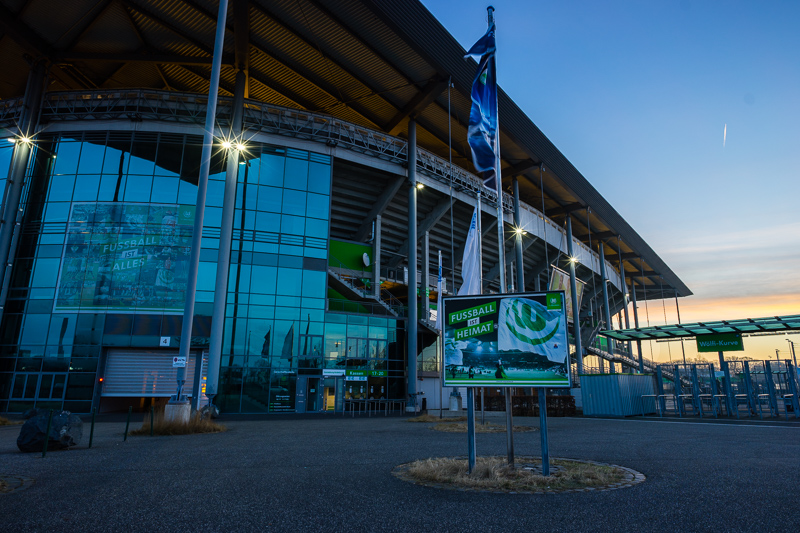

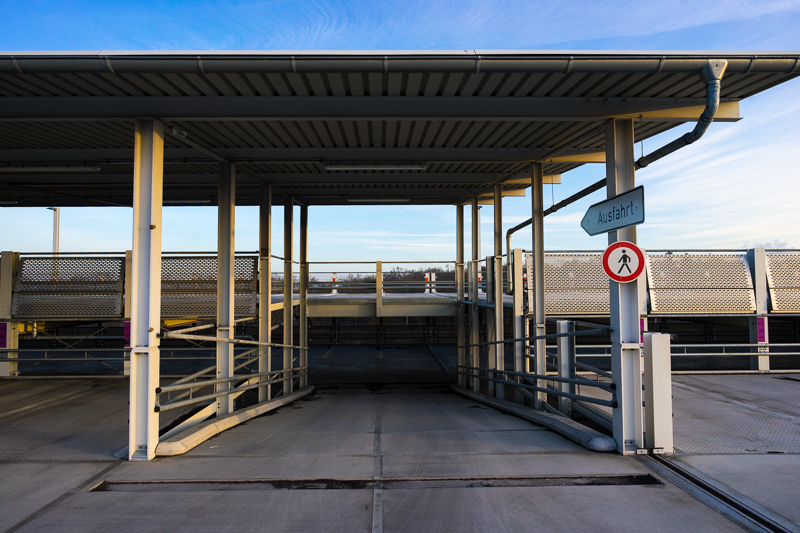
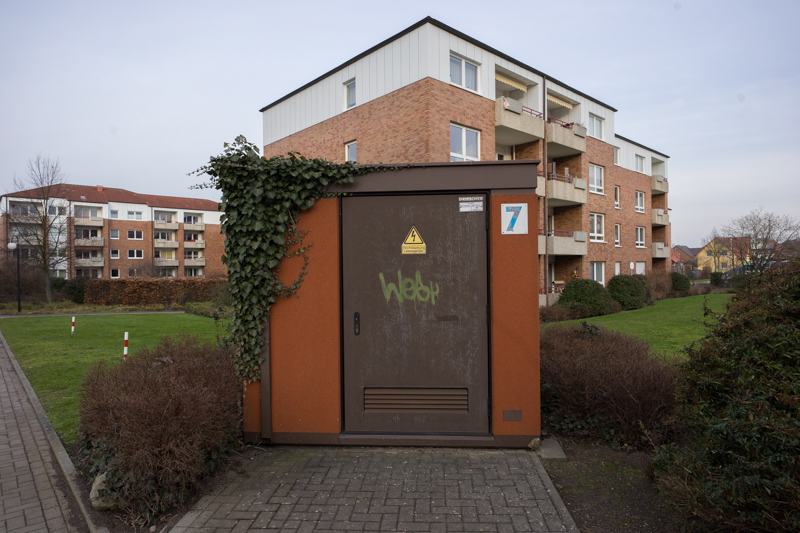
More sample images taken with the defective lenses to show the rendering, no full size samples of these.
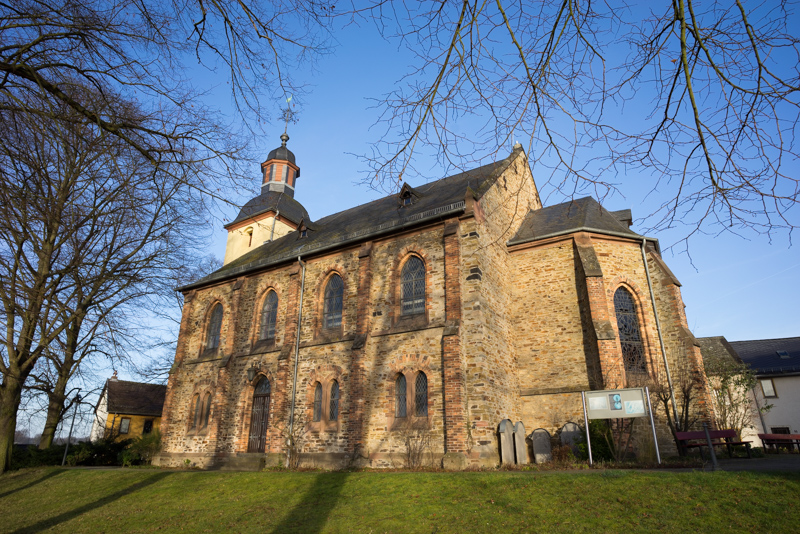

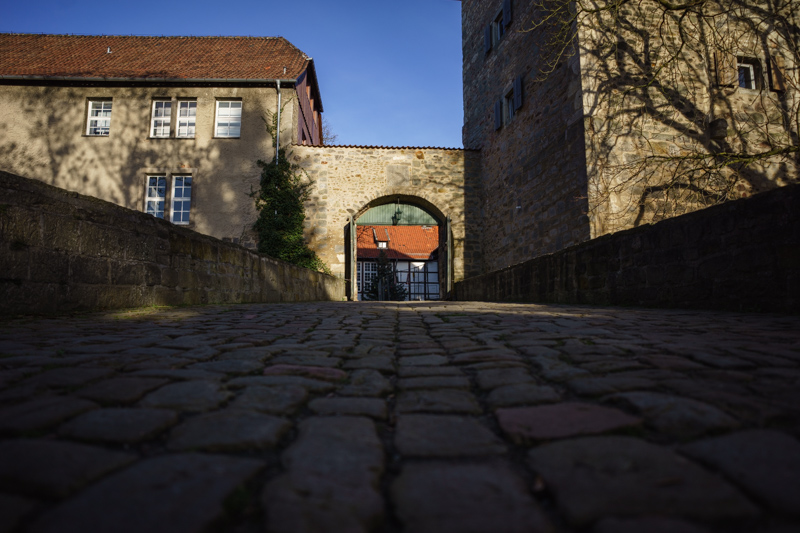
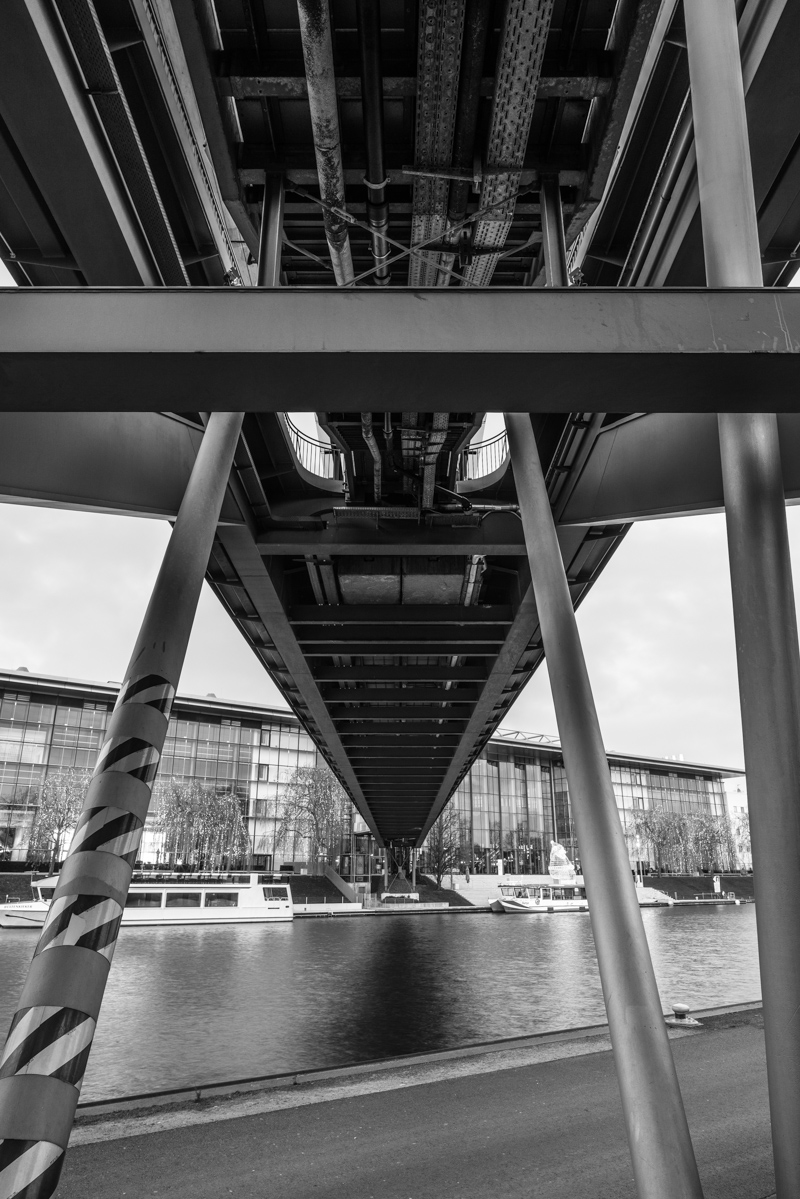
This site contains affiliate links. If you make a purchase using any of the links marked as affiliate links, I may receive a small commission at no additional cost to you. This helps support the creation of future content.
Jannik Peters
Latest posts by Jannik Peters (see all)
- A beginner’s guide to bird photography – Episode 1: Sharpening your senses - August 3, 2021
- Review: Tamron 35mm F/2.8 Di III OSD M1:2 - March 8, 2020
- Review: Zeiss Batis 2/40 CF after the Firmware Update - August 16, 2019
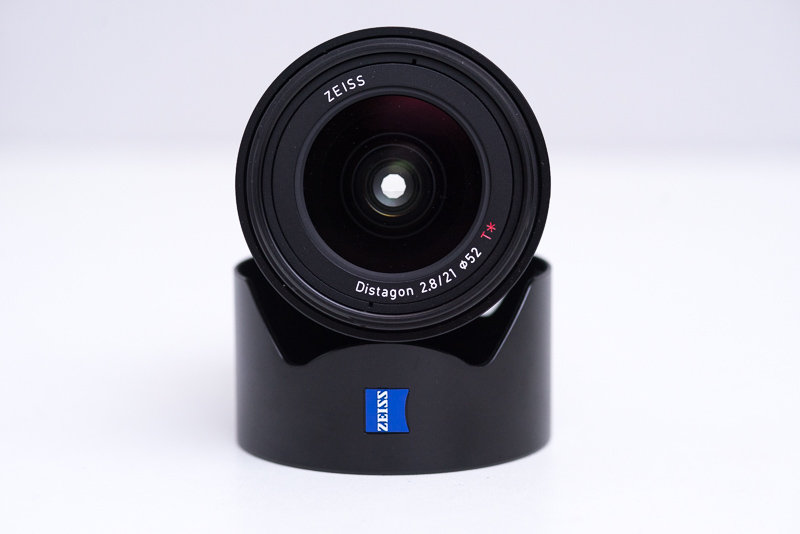
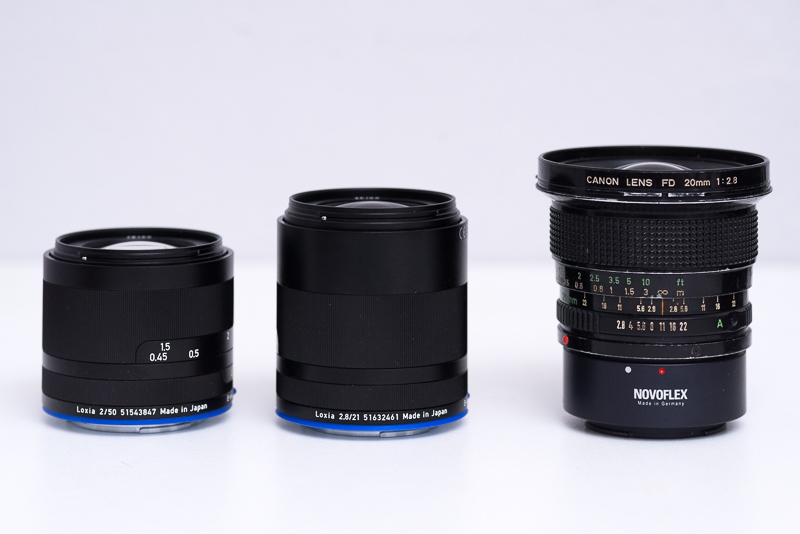
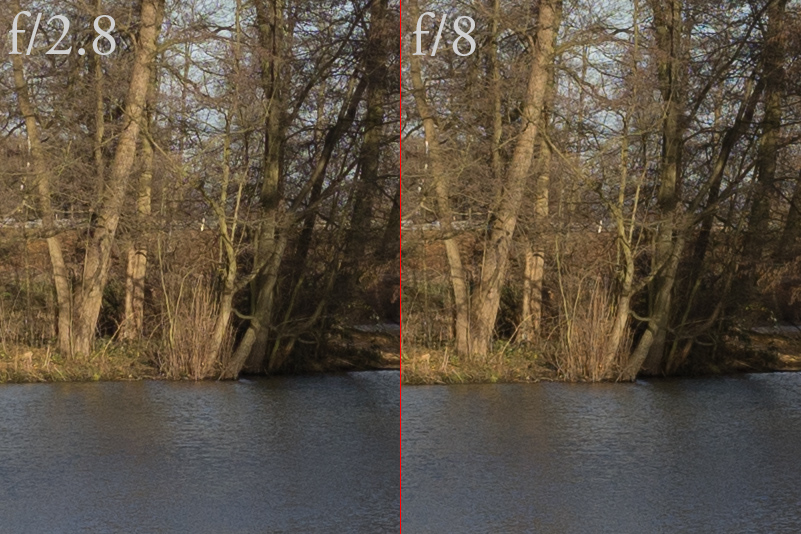
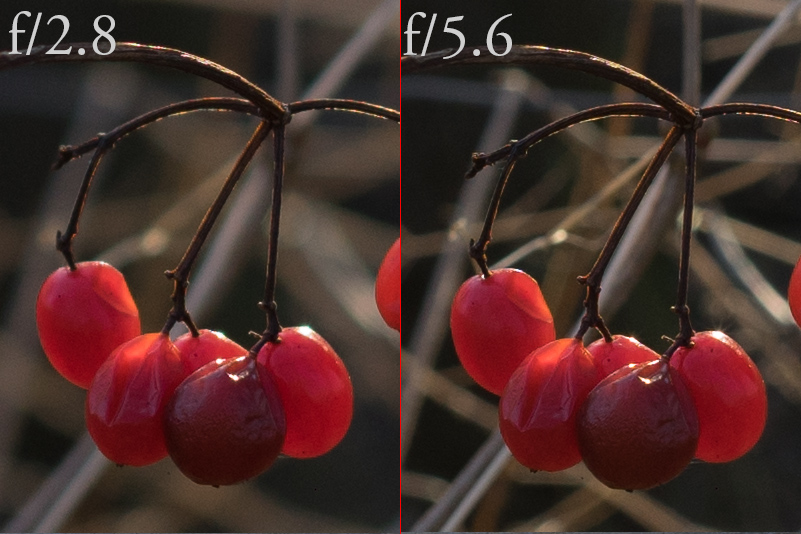
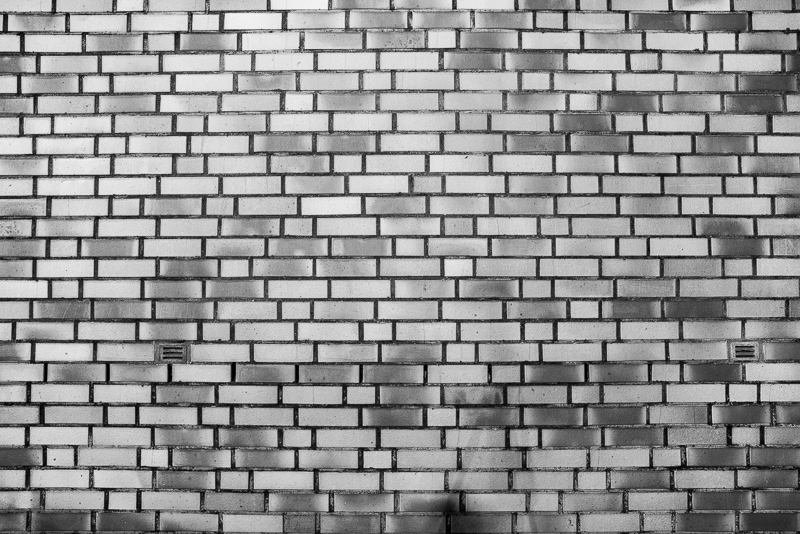
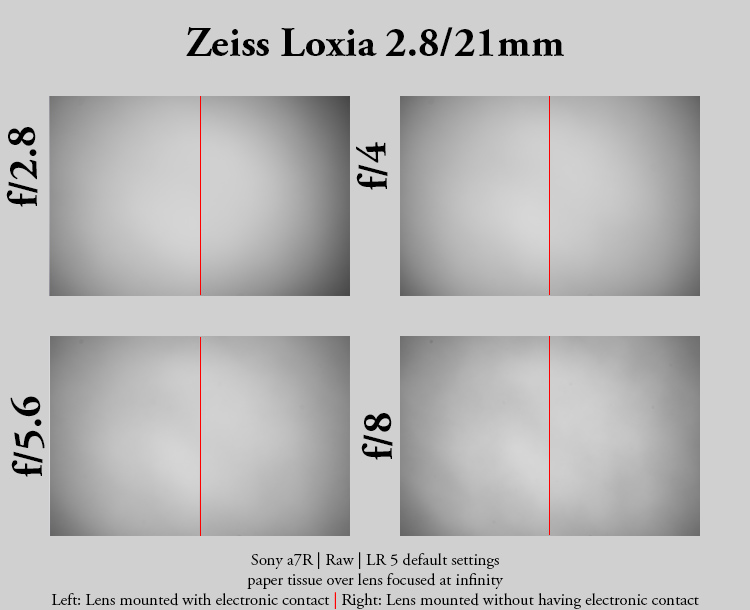

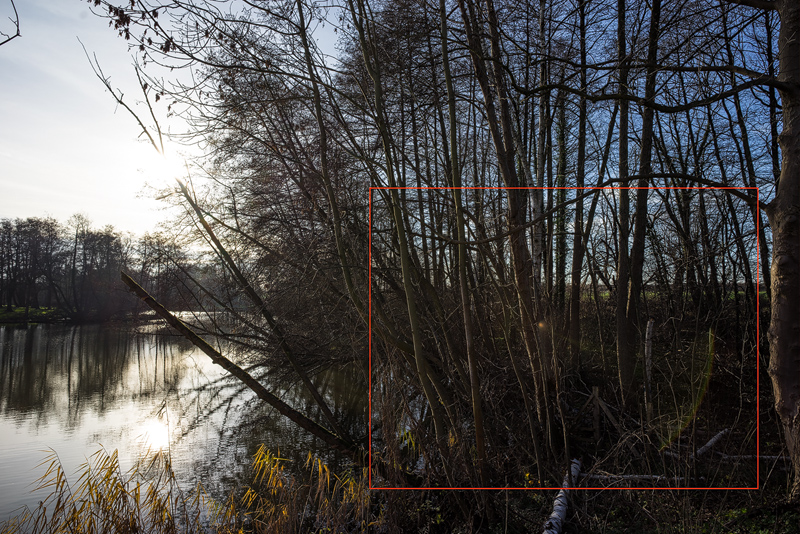


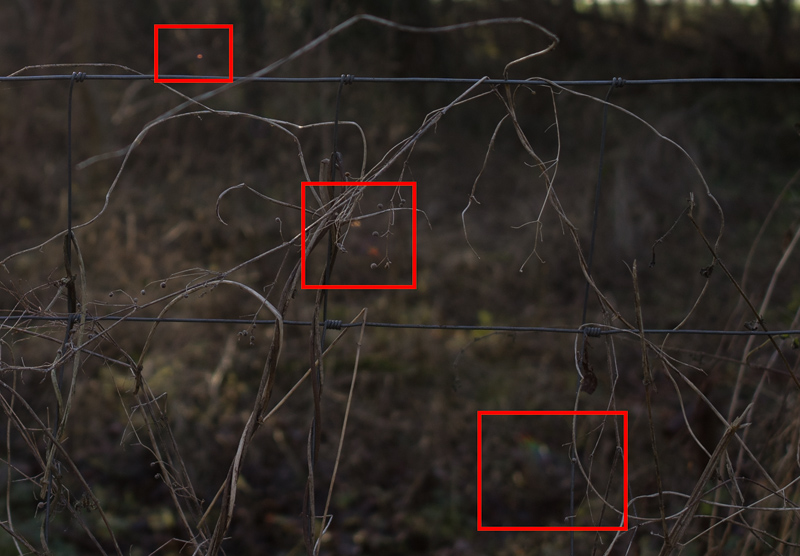
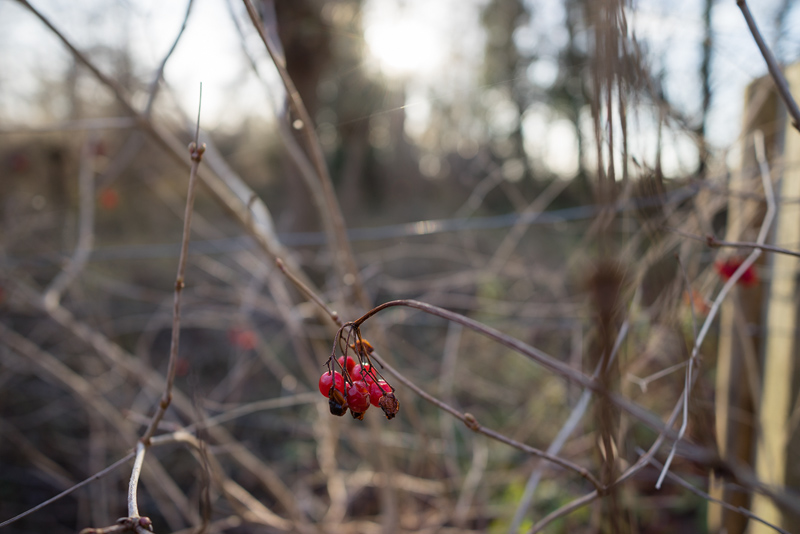
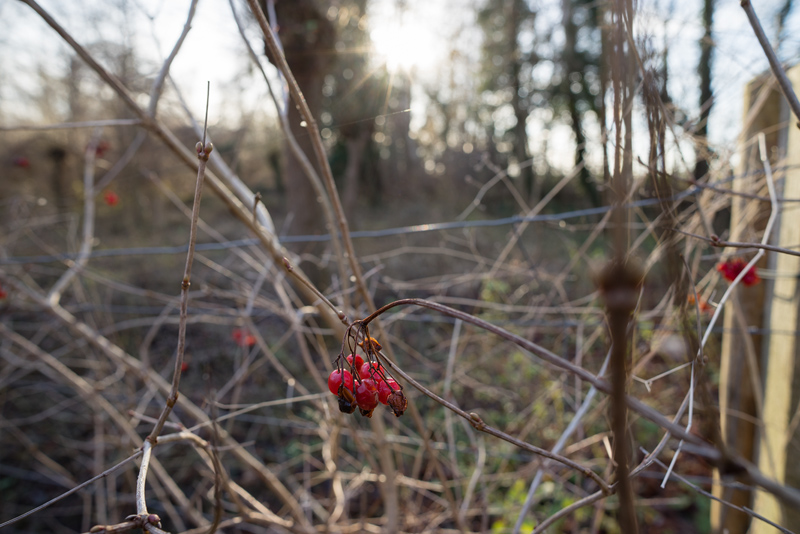
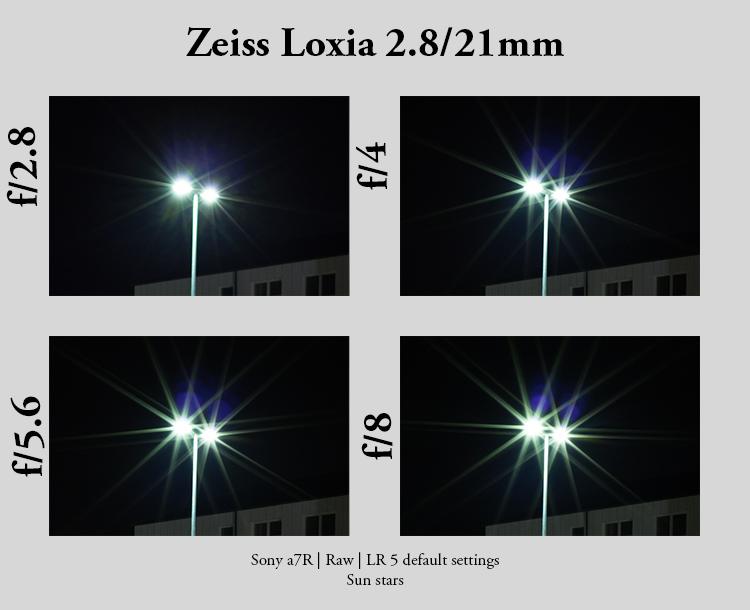
I have also received mine and I too find that mine goes ever so slightly past the infinity as do the other Loxia’s. Really days but the lens performs well and is well built. Only thing I find annoying is the very short focus-throw between the 2m mark and infinity
Hi Viramati,
The focus throw is around 7mm on the outer barrel. I will have to check this again as soon as my flange distance is original again.
Greetings,
Jannik
Jannik, nice review. You said you are passionate about astrophotography. What lenses do you like for astro with the Sony A7R?
Have you used the Canon 20mm FD lens for astro?
Thanks,
Rajesh
Hi Rajesh,
i would definitely not recommend the Canon nFD 20mm f/2.8 for that purpose. Poor corner performance wide open and strong coma are the problem.
If you are on a budget, go for the Samyang 14mm f/2.8 or the Samyang 8mm f/2.8 Fisheye II. Both very cheap lenses with low coma and good corner sharpness wide open.
Greetings,
Jannik
Jannik, I can’t wait to see the Samyang 14mm f/2.8 review from you!
Hi, Jannik.
Do you still recommend the Samyang 14mm f/2.8 or the Samyang 8mm f/2.8 Fisheye II for astro with the Sony A7R and, also now, with the Sony A7III?
Do these require an adapter or any other modification?
Do you, also now, recommend any of the more recently introduced lenses for the A7III?
Thanks, Charles
Check out our astro guide
A comment from my side: Since this lens has an aspherical element, the registry distance is VERY important to evaluate the lens correctly and you should really have your optical infinity matching the lens hard stop. Lenses with asph elements have been designed to work at ONE exact distance from the sensor. It is not the same as a lens without an asph element, which can work well at any distance (for example with your tough mount, it would just ask as a small extension ring).
I have shimmed all my adapters / asph lenses for my A7r to have the lens’ hard stop matching the infinity on the sensor, and have seen huge differences before and after adjustment for some lenses. The most visible effects are the field curvature, and the sharpness, especially in the corners.
Hi beetle,
yes, you are right. That’s why I didnt’ do any sharpness comparison or corner critical images so far. I will mount the original E-Mount today, then I will retest Vignetting too.
How did you do the shimming? That is very interisting.
Greetings, Jannik
I initially started shimming (after suggestions from the fredmiranda forum) my adapters with adhesive copper foil, but it turned out that the adhesive has a certain thickness that will decrease over time under compression. I have now shimmed all lenses/adapters with 0.1mm and 0.05 brass sheets (cut with regular scissors, then flattened with metal rulers). The adhesive is not required since there’s enough pressure with the screws to prevent the shims from moving inside.
Anyway, looking forward to seeing the review updates!
Cheers
Do you have an ebay link to such a brass sheet? I use adhesive copper foil but your solution doesn’t sound too bad and I have two adapters which need close to 1mm of shims so a thicker foil would be great.
It is not a lens with aspherical elements that need the exact registration distance it is a lens with floating elements for focussing that needs an exact registration distance. This lens does not have floating elements and the exact registration distance isn’t as crucial as some other lenses with floating element (i.e., the Zeiss ZF/ZE/Milvus 28mm f/2.8). Of course Jannik will want to fix his mount so he can get infinity focus, but this lens should not require as precise a registration distance as a lens with floating elements.
I had the Milvus 2.8/21 on a too short adapter and the corner performance was terrible. Do we know for certain that the Loxia doesn’t have floating elements?
Yes, Zeiss doesn’t advertise it as having a floating element and I have seen someone report that they asked Zeiss and were told that it doesn’t have a floating element.
As with the other Loxia’s I find infinity is not exactly at the hard stop but a fraction back from it
Yes, I can confirm that.
Can I asked you how do you recognize the mustage style sub frequency or what is this about, I cannot find any clear info on the web. Thanks!
If you look at the brick wall, there is very low distortion at the edges. It gets bigger when you get closer to the center. It looks like a mustache or a wave.
Jannik,
What you are calling focus shift is I believe what is usually termed focus shift. Focus shift happens when the plane of focus moves forward of backward when stopping down. Focus breathing occurs when the focal length of the lens (e.g., 51mm to 53mm) changes as you stop down. Your test seems like you could see focus breathing if it occurs, but not focus shift. So much is in focus even at f/2.8 it would be hard to see the plan of focus moving.
The focal length seems to be exactly the same, however, so it appears there is no focus breathing (c.f., the Loxia 50 does show focus breathing) and that is a very good thing for people who shoot video. Focus breathing is be distracting with video, but rarely has much influence with stills.
The first line should read, “What you are calling focus shift is I believe what is usually termed **focus breathing**.
Hi Steve, I really looked for the focus shift because the Loxia 2/50 has got that problem. That’s why I took the same image two times and just changed the aperture, not the focusing.
I don’t know how you could see change in the plane of focus with that test. Said another way the huge depth of field in an f/8 shot with a 21mm lens is likely to hide any focus shift that is going to occur. Unless you can precisely identify the plane of best focus you can’t really test for focus shift.
I just uploaded one more sample at close-up distance. Again no difference. If you have a better method of testing it, just let me know.
Hi Jannik,
Thanks for posting the new shots. They do a much better job of examining focus shift and do indeed suggest very little focus shift with the Loxia 21mm.
Phillip,
I enjoyed your review, it was well presented and detailed. However, I have installed a Tough E mount LT signature on both my A7 and A7r Sony bodies. The Loxia 35 and 50mm lenses that I have reach infinity on both bodies. I fact they go a bit past infinity depending upon the outside temperature. Your admonition to stay away from the Tough E mount is unfounded as far as I can see. Admittedly Sony has been very sloppy in their design and manufacture of these mounts. It is too bad that these mounts needed to be offered in the first place. I might add that many photographers are really not qualified to disassemble a camera mount and successfully put another in its place. It is too bad it is even an option.
Sincerely,
Rick Perry
Hi Rick,
why is that unfounded? I have the Loxia 2/50 too and that works fine with Tough E Mount LT Signature. However, the Loxia 2.8/21 doesn’t reach infinity with my sample and I just wrote that down here. This should not be the advice stay away from the Tough E Mount in general, you should just be aware that you can have problems with the Loxia 2.8/21.
Greetings,
Jannik
The shorter the focal length of a lens the more sensitive it is to a different flange focal length. I reviewed the Loxia 2/50 some time ago and it focused a little bit behind infinity so it is totally plausible that the Fotodiox mount works okay with the Loxia 35 and 50 but causes issues with the Loxia 21.
Quote,
“While the Tough E-Mount LT works great with native lenses, I strictly do not recommend the use of Loxia lenses with it.” End quote.
I was referring to the above statement.. Which seems to say ‘stay away from Loxia lenses if you use the Tough mount .. .??
Rick
Hi Rick,
I was referring to the squeezing of the rubber gasket on the other lenses. That is a problem in my opinion, too. I just changed the formulation on that part of the review.
Jannik
I have had three A7 (still have two), and the register distance for each was different from new! (Based on test at 3m(10′), where the focus varied by~1.5mm on the barrel of my MD 100/2.5)
I don’t know if this is variation in mount position or sensor position, but swapping to Tough-E LT was exactly the same as the original mount, which may suggest that the sensor position tolerances are very wide.
With Zony AF, maybe not a problem,(?) as they have a variable infinity stop, but for “critical” lenses like the Loxia 21, this could be a real problem, regardless of mount
Hi Tim,
thanks for your comment, that is very interesting. I have the signature edition, which one do you have? I have encountered no problems with my three Zony AF lenses too. Critical were only the Samyang 8mm f/2.8 CSC II Fisheye and the Loxia 2.8/21.
Jannik
Yes, the Signature edition too, though I have also tried the Shotun replacement mount, (currently on my IR A7, with FE 24-70, almost a permanent fitment.) Quite a correspondence about them, with Phillip.
Jannnik,
I agree, the rubber gasket on the Loxias do get quite compressed when mounted on the Tough E brass mount.. my question would be: do they get a similar amount of compression when mounted on the newer Sony mounts which are on the A7 rii and A7ii?
Rick
Hi, Mine has a metallic sound when focusing. Super smooth but a metallic sound. Can you check yours. Does it sound different when quickly turning focus compared with the 50 or 35 Loxia?
Yes, it has a different sound. Sounds a bit like a gear while the Loxia 50 soulds more metallic in my opinion.
How would the 5-axis stabilization affect registration distance?
No. And Jannik used a a7r without stabilization
Why not attach the Loxia 2.8/21 to the proper camera body mount?
This after all, is the configuration for which the lens was designed.
Premature conclusions based upon improper product use only serve to mislead readers. Moreover, adding a component between lens and body only adds a large set of new and untested variables (Plano-parallelism, helical machine thread quality and aligmnet, etc.).
Camera Movement Between Corner Comparison
In addition, the corner shots offered as indication of Loxia de-centration reveal the camera was moved and recomposed to show assumed left/right asymmetry of focus. Un-managed camera tilt can explain the focus difference seen.
Without knowing the reviewers optical design/professional photographer credentials, I would reserve judgement over any conclusions until someone actually analyzes the tested device on the mount for which it was intended.
m
Hello Michael,
I mounted the original mount already and double checked the decentering with my other lenses. The Canon nFD 20mm f/2.8 and the Loxia 50mm f/2.8 seem to be centered very good, so I think my original mount is not the problem here. I am in contact with the Zeiss support. They are currently checking the lens, I hope they will confirm my findings.
Next week, I am getting a press copy from Zeiss and will finish the review then. The only scenario where I will send my A7R to the Sony service is, when the press sample shows the same behavior.
Jannik
Hallo Phillip,
zur Anpassung von Adaptern nutze ich die Folien von Blattlehren. Wenn du eine in kleiner Abstufung 0,03 0,05 etc kaufst und erst die passenden Löcher (2mm) bohrst, kannst du dir Shimms abschneiden. Beim Bohren unbedingt ein Holz unterlegen und hineinbohren.
Leider nicht in Englisch, da dies mein schlechtestes Fach war.
LG
Jürgen
Das geht aber auf Dauer ganz schön ins Geld, oder?
Hallo Jannik, Phillip,
bei meinem Loxia 21mm ist der Fokusring bereits ab etwa 10m (!) entfernten Objekten am Anschlag. Gestern am Flughafen waren ca 5km Objekte damit auch scharf. Jedoch schwer zu beurteilen, weil da bereits viel im Dunst war. Was aber wenn ich mal Sterne fotografieren möchte? Oder in der Atacama 60km Fernsicht sind?
Ich komme leider nicht zu einer Langzeitbelichtung in klarer Nacht. Deshalb an Euch die Frage wie relevant sowas ist. Muss ich das unbedingt innerhalb der Rückgabefrist testen oder isses egal?
Hi Hardi,
ich hatte exakt das gleiche Problem mit meinem Austauschobjektiv. Deshalb ist das Review auch noch nicht fertig. Das Loxia ist schon wieder beim Service, dort wird der sogenannte Überhub justiert. Eigentlich muss es ein gewisses Maß über Unendlich hinaus fokussieren. Ist das nicht gegeben, ist das für mich ein klarer Fall für den Service. Da der Zeiss Service im zweiten Anlauf sehr nett und hilfsbereit war, würde ich es wohl mit einer Reperatur anstatt einer Rückgabe versuchen, gerade wenn es gut zentriert ist. Die Justage des Überhubs dürfte technisch keine große Herausforderung sein.
Gruß,
Jannik
So tested the 21mmf2.8 wide open, f2.8 for astrophotography.
No coma at all, vignetting but not dramatic can be easily removed since LR provides a profile.
Must have a good sample !
Check out here: http://www.dpreview.com/forums/thread/3961918#forum-post-57364201
Friendly greetings
Did some tests regarding astrophotography and my sample is almost coma-free. Maybe more bright stars in the extreme corners could be a problem like you are showing in your test but I think for the most images it will be OK.
See: http://www.dpreview.com/forums/post/57367794
Thanks for sharing your experience, Edward! The coma test behaves like bright stars. I have also examined that the visibility of coma is largely reduced with darker stars. The image below the coma test shows, that only the extreme corner suffers from coma, the rest of the image is pretty coma-free. Therefore, I would not hesitate to use it wide open for my astro work.
I would be most grateful if you could present some “identical as possible” same image photos directly comparing batis 18 and loxia 21. I believe I am not alone in wanting to buy one of these lenses, but not both, and I would love a direct comparison of image quality and character under some varying conditions. It would be extremely useful to me in making my purchase choice.
(Isn’t it great when readers tell you how to use your extra time?)
Philip,
I just ordered this lens and am looking to purchase a CP filter for it. Does it vignette with a regular thickness CP and thus I need to pick up a slim CP filter?
Fantastic website!
Cheers
Jonathan
Hi Jonathan,
I used an slim CP with an slim ND Filter and it didn’t vignette if I remember correctly. A slim CP definitely works, I don’t own a thick one.
Jannik
Hi!
Read about sensor reflexions regarding Loxia 21mm and Sony A7 mk 2…
see link :http://admiringlight.com/blog/review-zeiss-loxia-21mm-f2-8-distagon-t/2/
Has someone of You guys noticed that as well?
I have also very rarely experienced this on my A7rII.
Does it show more in very bright conditions like clear blue sky and sea, or in wintertime with sun and snow…? With other words is the combo lens/camera more sensitive for extreme bright light when it comes to sensor reflexions?
This is very important to me to know simply because I work during snowy winter conditions 4 months per Year in the Nordic countries. Or does it just show very rarely without any real explanation?
By the way… thanks for giving me inspiration technically and image wise in my work as a photographer!!!
Hey, out of all shots I have taken with this lens this is pretty much the only one with visible reflections (right border): https://www.flickr.com/photos/140854680@N04/30828023351/in/dateposted-public/
I think it is more of a problem for nightly city shots.
Nice review.
Does anyone compare Loxia 21mm f2.8 and Olympus Zuiko 21mm f/2.0 Lens?
From the price point of view they are quite similar, while the Loxia is brand new and Olympus is in mint condition.
I am looking for nice lens for astrophotography and landscape. What lenses do you prefer for astro with the Sony A7ii?
Thanks,
without having used the Olympus I can guarantee you that it’s performance for astro will be severely lacking. It’s price reflects more it’s rarity than it’s performance. Try a Nikon 1.8/20 or Sigma 1.4/20 if you want a very fast 20mm
Hi Philipp,
I just bought a Loxia and I am amazed by the colors and the punch the images have with no post processing at all.
However, I am a bit puzzled by the hard stop for infinity. On my lens, it seems to stop exactly when it gets the most sharp (at least with the focus magnifier on center). Is this similar with your lens copy that you returned for focusing before infinity or is this normal? How so you recommend to test it for correct focus at infinity?
Thank you very much for your help!
Best Regards,
Daniel
Hi Daniel,
my second copy that was faulty was also the sharpest when focused at the infinity stop. Unfortunantely the perfect level of sharpness was behind that point, the adjustment fixed that issue. Nevertheless, the ideal case would be an perfectly adjusted infinity stop for me but this is not intended by Zeiss for the 2.8/21.
– Jannik (not Phillip 😉 )
Hi Jannik,
sorry, I realised my failure after clicking the submit button 🙂 and could not find a way to edit the post.
Thank you for the answer. I guess I will wait for the weekend (the weather is not good for any tests now in Germany, I guess you noticed this) and try to test focus at some closer distance and at infinity. In case there is no difference I will just be happy and enjoy the lens, in case there is a notable difference I will just ask the dealer to send the lens to be checked.
It just puzzles me a bit, because most of the posts and reviews in internet say that this lens normally has the infinity focus a little before the hard stop and I am not sure if my copy can do better that what it does now 🙂
Have a nice evening,
Daniel
Hi.
I know it’s an old thread.
I will just say that my copy that was decentered(see below) also had maximum sharpness in centre exactly at infinity. That made it impossible to get the corners ok even at f/8.
I delivered mine back to the shop where I bought it.
David
Hi,
thanks for the great review! Just one additional question: How is the Tokina Firin 20mm 2.0 compared to the Loxia. Do you have any experiences so far with the Firin?
Thanks in advance,
Sebastian
Bastian will receive Phillip’s sample of the Firin tomorrow. We’ll know more soon if the weather is gentle.
Any idea how this lens would compare to the new Sony GM 16-35/2.8 at 21mm?
Thanks,
C.T.
No, but they are very different lenses. I expect sharpness in both cases on a very high level, but the Loxia is much smaller, less flexible, has better sunstars, better flare performance and only MF… So I think the choice should be clear if you know what you want to do with the lens.
Well, after only using adapted glass on my A7ii and A6000, I finally have this lens, my first FE lens.
Hopefully I have a good copy and it is worth it over all of my very cheap manual glass!
Hey, thank you for the great review.
However, the original SLR lens Contax Zeiss Distagon 2,8/21mm was announced in 1992 and made available by mid 1993, so it’s not from the 80’s.
I was a bit surprised to see that but you are of course right. Corrected 🙂
Hey, So how is the contax distagon 21mm f2.8 compared to this Loxia? Thank you
This is my first manual lens and I love it. Is it normal that the aperture does not show on the camera display?
It is not 🙁
Ein super Bericht!
Das Gegenlichtverhalten ist ja wirklich einmalig mit dem Loxia.
Zumindest wenn man den richtigen Body verwendet.
Ich habe derzeit die A7 (Mark 1) und da habe ich teils sehr unschöne Sensorreflektionen. Ich werde mir das Loxia 21 ziemlich sicher kaufen, bin aber auch am Überlegen den Bod zu wechseln. A7RII oder die neue A7III.
Habt ihr Beispielbilder mit der Kombi Loxia 21 auf A7? Ich befürchte mein Verdacht mit den Reflektionen ist begründet?
Herzlichen Dank für eure Einschätzung.
I had a Tokina Firin 20mm and it was an excellent lens (apart from flare issues, or shooting against bright subjects).
I then made the mistake of using a Loxia 21mm and I quickly sold the Tokina and purchased the Loxia 21…WOW.
What a beautiful lens.
Not only the technical qualities, but also the way it actually renders the images. Absolutely Beautiful and a joy to use.
By the way, excellent review here
Hi PhillipReeve`s Team,
Does anyone compare Loxia 21mm f2.8 and Zeiss Biogon 21/2.8 ZM Lens?
We haven’t. The ZM is not optimized for the Sony stack so you will run into some issues there. The MTFs for the Loxia look a little better than those for the smaller ZM but not by much. Conclusion: On a Sony I see little reason to use the ZM.
Just ordered this lens with your link and can’t wait to get it. Love your site and it helped me make my decision. Should be a great lens for the Colorado Backcountry
B&H Sent me an email today with an offer for this lens @$874
If you are interested it seems it would be a great time to purchase.
I just bought a Loxia 21 f/2.8 and I am very disappointed. It is badly decentered, and maximum sharpness at infinity is exactly at infinity.
At f/2.8 it’s between 1/3 and 1/2 of tge frame that us visible unsharp compared to the other side.
Well I would just warn buyers to check the lens when they get it. The one I bought is going back tomorrow.
David
You should check every lens when you get it as every lens can be decentered, regardless of manufacturer.
Hi Bastian.
That is also what I did and have done for the last 15 years and had previous seen decentering on a Sony 70-200 G SSM, and a Sony 24-70 f/2.8 ZA both for A-mount.
Nevertheless I expected more from Zeiss in 2019 especially since I haven’t found any negatives about the Loxia before buying. This post was also to make people aware that there is issues even with this highly praised lens.
https://www.dpreview.com/forums/post/62285549?image=0
Roger Ciala of LensRentals wrote this about copy variation:
“Out of the box, our failure rate for lenses (pretty high standards) overall is just under 2%. With low variability lenses it’s 1%. Lenses we think of as bad are, at most, 5%.
“Let’s do some quick math. If 2% of lenses fail, that suggests that you would need to, on average, buy 50 copies of a lens to find a truly bad one. So when someone says “I’ve owned 50 lenses and none of them were bad”, I’m not surprised. Half of the people who own 50 lenses should never see a truly bad copy.”
Even with a high-quality, low-variability lens line (for which Roger suggests a low 1% failure rate) you have about a 40% chance of getting a lemon if you purchase 50 lenses over your career.
Thanks for explaining that every Zeiss lens family are designed to have many aspects in common. I’ve been trying to learn more about lenses used in photography because it’s a hobby I’ve always been interested in trying. I’m glad I read your article because I think I’m starting to understand some of the similarities between lenses.
Hi,
Do you know if Zeiss 21mm 2.8 ZM faces issues like blurry corners and magenta casts when adapted to Sony a7ii?
Blurry corners: yes.
Magenta or green cast depending on camera.
I Somtimes see magenta cast on A7rIII. But only somtimes. It’s easy correctable, and is mostly visible if I change the WB in RAW to warmer colors.
Example: https://www.instagram.com/p/BzMHSODhyxF/?igshid=dnry48jj1vrs
Sorry I ment magenta cast in the corners of photos shot with the Loxia 21 f/2.8 especially when correcting the WB to warm.
Hi,
I bought the Loxia last month and it was brought with my travel to Sabah. When I review the photos after the trip, some flares are observed in a few of shots taken in my Sabah travel:
1. https://flic.kr/p/2eyfGZG
2. https://flic.kr/p/RZuQyR
3. https://flic.kr/p/2eyfHqG
The 1st one above shows the strongest flare while I believe 2nd and 3rd are probably normal but still look worse than other test shots online IMO. Is such level of flare acceptable for the Loxia 21?
First one is a pretty extreme example.
Just once I managed to get something similar by shooting straight into a streetlamp.
Thanks for the reference sample! I agree that it is an extreme case. In fact, I have shot a bunch of photos straight to the Sun from different angles throughout the trip. I think it has pushed the lens to the limit against the flare 😛
Thank you for a superb review. I thoroughly enjoy your site with great insights and sample photos – and appreciate the many hours you must all invest in sharing your passion. I bought the Loxia 21 based on this review and it has made me realise how much more there is to look for and appreciate in a wide angle lens than resolution alone. Thank you again!
Dear Jannik & Phillip,
Thank you so much for the in depth review of all the lenses…for me, your site is kind of a reference, which I check before buying a lens. I also use the Zeiss Loxia 2.8/21 on my Sony A7 III…It is definitively a great optic. I like the 21 mm for landscape and urban photography, is not too long and not too short, perfectly sharp and a great experience using this manual lens in combination with all the modern features of a mirrorless camera!
I have put a link to your site from a blog post, reviewing the Sony FE 24-105 F4 OSS, if u are interested:
http://www.sc-fotoblog.com/sony-fe-24-105-mm-f4-g-test/
Keep your good work going!
Best regards from Austria!
Stefan
Thank you for the great review. Has anyone compared this 21mm with the Rangefinder G-mount Contax 21mm adapted for a Sony A7 III ?
I was looking at Bastian’s flickr album on this lens – some of those shots are unreal (as if I am actually standing there, looking at the scenery)
For example, that “Hallstatt Lake” shot – is this really just a single shot (no stacking of any kind)? Any post-processing? I can see at the EXIF data, but can’t figured if something’s changed…
That “Hallstatt Lake” shot is a single shot and it only received minor post processing (Lightroom only, lifting shadows mainly – no fancy stuff).
It actually is even run and gun, by the time I gave composition a little more thought the boat was already gone…
Out of the 49 shots in that album there are 3 where different exposures have been combined and 4 panoramas, so those are the exception.
Another great review!
re the lack of a lens bag, I use the Tenba Tools Soft Lens Pouch for all of my lenses. Work really well and good for storage too.
Really great review of this lens. Would you still recommend this lens in 2024? I am torn between this lens and the Sony 20mm F1.8. I could get both lenses at roughly the same price used here in Austria.
If you need AF or a maximum aperture of f/1.8 get the Sony.
If you want a manual focus lens and/or distinct Sunstars get a used Zeiss 21mm 2.8.
Stopped down they are both plenty sharp.